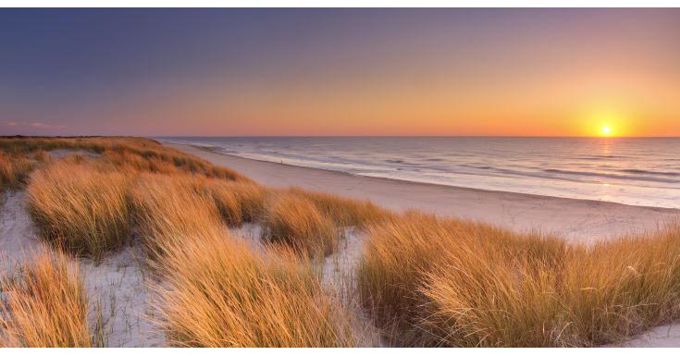
Virginia's Living Shoreline Law Webinar Recap
Watch Our Virginia Living Shorelines Webinar
What We Covered In Our Webinar
During our webinar, we discussed the new mandate in Virginia Code § 28.2-104.1(D): “The [VMRC] shall permit only living shoreline approaches to shoreline management unless the best available science shows that such approaches are not suitable.” We also covered the goal of a living shoreline, the difference between a living shoreline and a hardened shoreline, and the impact the new law will have on commercial and residential waterfront property owners.
What is a Living Shoreline?
According Virginia Code § 28.2-104.1, a living shorelines provides erosion control and water quality benefits; protects, restores, or enhances natural shorelines habitats; and maintains coastal processes through the strategic placement of plants, stone, sand fill, and other structural and organic materials.
Some of the major benefits of a living shoreline:
- Protects from erosion
- Lessens flooding
- Improves water quality
- More finfish, crabs and oysters
What is a Hardened Shoreline?
A hardened shoreline, also referred to as an "armored" shoreline, is an installation of engineered shore structures to prevent erosion. A few examples of a hardened shoreline would be seawalls, bulkheads, revetments, or riprap. Hardened shorelines traditionally are the “default method” selected by waterfront property owners, with about 18% of Chesapeake Bay coastlines armored and higher values (45-50%) along urban shores in many areas.
The Pros and Cons to a Living Shoreline
- If have gentle slope and low wave energy, the living shoreline is cost effective
- If site conditions make the living shoreline more expensive than hardened shoreline
- Does “best available science” show living shoreline “not suitable”
- Hardened shoreline
- Increase erosion on adjacent property; scouring along the base
- Dirtier water
- Forfeit the flood protection of the living shoreline
- Fewer finfish, crabs and oysters
Impact on Commercial and Residential Waterfront Property Owners
According to Virginia Code § 28.2-104.1(D), "The [VMRC] shall permit only living shoreline approaches to shoreline management unless the best available science shows that such approaches are not suitable.” The key to this Virginia Code is how the Local Wetlands Boards and the VMRC interpret and apply this law, specifically regarding "best available science" and "suitable".
- VMRC October 2020 precedent (commercial): 162’ living shoreline / 452’ hardened shoreline requested and approved (no appeal filed)
- VMRC February 2021 precedent (residential): 129’ hardened shoreline requested, 67’ approved, 62’ denied (appeal filing deadline has not expired)
Implementation at Local Wetlands Board
The Local Wetlands Board (LWB) is central to implementation because the inter-tidal zone is the location of the shoreline, whether it's living or hardened. The new living shoreline law amended the wetlands zoning ordinance to require the LWB to document whether a living shoreline is “suitable” Virginia Code § 28.2-1302 (§ 4(B) of the Wetlands Zoning Ordinance).
- VMRC’s May 12, 2020 memo to LWB’s
- Reminds LWB’s to update their Wetlands Zoning Ordinance
- VMRC will update its Wetlands Guidelines (issued 1993)
- Potential variation because up to 46 LWB’s in Virginia
- LWB decision can be appealed (to VMRC and then to Circuit Court)
Implementation at VMRC
VMRC October 2020 precedent (8-0)
- Unwilling to second guess how LWB decided “suitability” if no appeal
- Limited its review to those parts of the project below mean low water
- Reluctant to tell the applicant how to design his/her project
- Gave significant weight to the historical use of the site
- Though VMRC decisions can be appealed to Circuit Court, no appeal filed as to the October 2020 precedent
VMRC February 2021 precedent (6-2)
- Applicant requested 129’ hardened shoreline (revetment)
- Applicant’s reason for hardened shoreline: “tremendous cost” of living shoreline
- VMRC approved 67’ hardened shoreline; denied 62’
- Unlike the October 2020 precedent, no LWB decision
Next Steps
- Release draft update of Wetlands Guidelines March 1, 2021 for 30- day public comment period
Living Shoreline Resources
- Virginia General Assembly enacts living shoreline law (July 2020)
- VMRC’s implementation of the living shoreline law (October 2020)
- Interpreting “best available science” in the living shoreline law (Nov. 2020)
- Is a hardened shoreline ok if a living shoreline costs “too much” (Dec. 2020)
- Download the Webinar Slides Here
To watch our full Living Shorelines webinar, click here. Be sure to sign up for our email newsletter for future webinar announcements.
